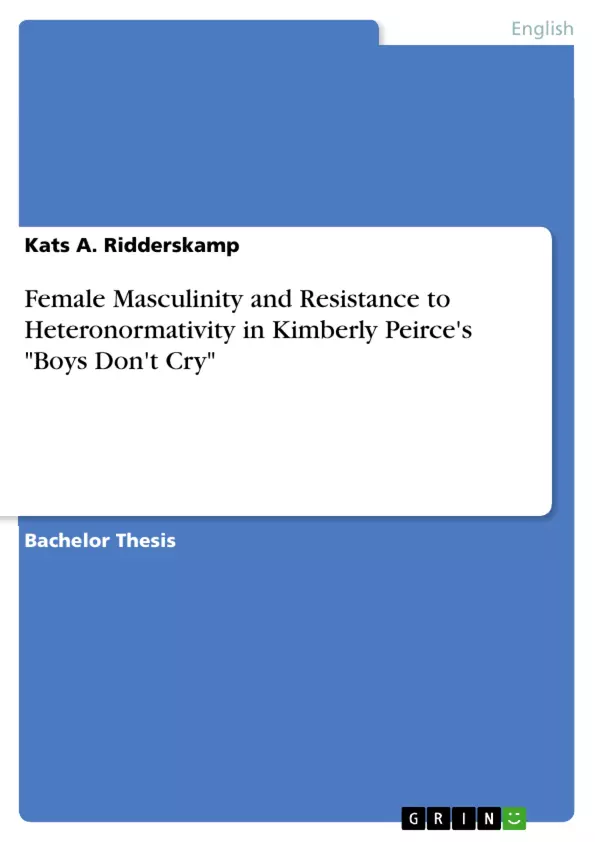This thesis examines how Western ideals of masculinity are depicted by the characters in Kimberly Peirce's 1999 film 'Boys Don't Cry'. Particular focus is given to the trans-masculine protagonist Brandon Teena, a real life victim of transphobic lethal violence. A diverse set of texts and authors, including Halberstam and Judith Butler, make up the theoretical basis to analysing how different types of masculinity, such as "female masculinity", are created in the film's context. Furthermore, this thesis looks into how heteronormativity is affirmed and resisted in the film, and how violence functions as a tool to uphold hegemonic masculinity and heteronormativity.
Inhaltsverzeichnis (Table of Contents)
- Introduction
- Theory
- Constructing (Female) Masculinity
- Female Masculinity
- Trans-Male Masculinity
- The Role of Violence in Masculinity
- Synopsis
- Constructing (Female) Masculinity
- Analysis
- Characters' versions of masculinity
- Brandon
- Tom and John
- Lana
- Masculinising and Heterosexualising Violence
- The Bathroom-Scene
- The Rape
- The Murder
- Characters' versions of masculinity
- Conclusion
Zielsetzung und Themenschwerpunkte (Objectives and Key Themes)
This thesis analyzes the portrayal of masculinity in the film "Boys Don't Cry," focusing on the trans-masculine protagonist Brandon Teena and his interactions with cisgender male and female characters. The analysis explores how different types of masculinity are constructed within the film and how violence is used to maintain hegemonic masculinity and heteronormativity.
- Constructing and understanding different forms of masculinity, particularly female masculinity and trans-male masculinity.
- Examining the role of violence in upholding and enforcing dominant notions of masculinity and heterosexuality.
- Analyzing the ways in which characters resist and affirm heteronormativity in the film.
- Investigating the complexities of gender identity and performance, particularly in relation to trans-masculine individuals.
- Exploring the intersection of gender, sexuality, and violence in the context of rural America.
Zusammenfassung der Kapitel (Chapter Summaries)
The introduction provides the context for the analysis by discussing the story of Brandon Teena and the film "Boys Don't Cry," highlighting its significance in representing the transgender community and their struggles. Chapter two outlines the theoretical framework for the analysis, drawing upon works by Judith Butler, J. Halberstam, and others to define and understand concepts of female masculinity, trans-masculine masculinity, and the role of violence in constructing and enforcing masculinity.
Chapter three delves into the film's depiction of masculinity through an analysis of the characters' behaviors and interactions. It examines how Brandon's masculinity is perceived and presented in relation to the cisgender male and female characters, exploring the dynamics of power, violence, and gender identity.
Schlüsselwörter (Keywords)
Key terms and themes include: female masculinity, trans-masculine masculinity, cisgender, heteronormativity, hegemonic masculinity, violence, gender identity, gender performance, transphobia, homophobia, rural America, film analysis, "Boys Don't Cry."
- Citar trabajo
- Kats A. Ridderskamp (Autor), 2023, Female Masculinity and Resistance to Heteronormativity in Kimberly Peirce's "Boys Don't Cry", Múnich, GRIN Verlag, https://www.grin.com/document/1493047



